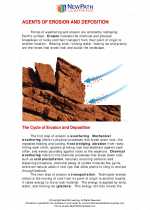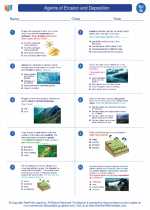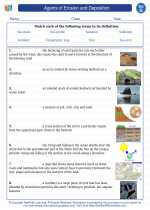Agents of Erosion and Deposition -> lakes
Lakes
What is a Lake?
A lake is a large body of water that is surrounded by land. It is often formed in a depression in the Earth's surface, and may be fed by rivers, streams, or precipitation. Lakes can vary in size from small ponds to large, expansive bodies of water.
Formation of Lakes
Lakes can be formed through various geological processes, such as glacial activity, volcanic activity, tectonic activity, and erosion. For example, glacial action can carve out depressions in the Earth's surface, which then fill with water to form lakes. Volcanic activity can create crater lakes within volcanic calderas. Tectonic activity, such as the shifting of the Earth's crust, can also create depressions that fill with water to form lakes. Erosion by rivers and streams can carve out basins that become lakes.
Ecological Importance
Lakes play a crucial role in supporting diverse ecosystems. They provide habitats for a wide variety of plants and animals, including fish, amphibians, birds, and aquatic plants. Lakes also contribute to the overall biodiversity of a region and support important ecological processes such as nutrient cycling and water filtration.
Human Uses of Lakes
Lakes serve as important resources for human activities such as fishing, boating, swimming, and water sports. They also supply water for drinking, irrigation, and industrial purposes. Additionally, lakes are often popular recreational destinations and contribute to the tourism industry in many regions.
Study Guide
- What is a lake and how is it formed?
- Explain the ecological importance of lakes.
- Discuss the various human uses of lakes.
- Describe the different ways in which lakes can be formed.
- Identify and explain the key features of a lake ecosystem.
Understanding the formation, ecology, and human uses of lakes is essential for comprehending the importance of these freshwater ecosystems in our environment.
[Lakes] Related Worksheets and Study Guides:
.◂Science Worksheets and Study Guides Seventh Grade. Agents of Erosion and Deposition

 Worksheet/Answer key
Worksheet/Answer key
 Worksheet/Answer key
Worksheet/Answer key
 Worksheet/Answer key
Worksheet/Answer key
 Vocabulary/Answer key
Vocabulary/Answer key
 Vocabulary/Answer key
Vocabulary/Answer key
 Vocabulary/Answer key
Vocabulary/Answer key
 Vocabulary/Answer key
Vocabulary/Answer key
